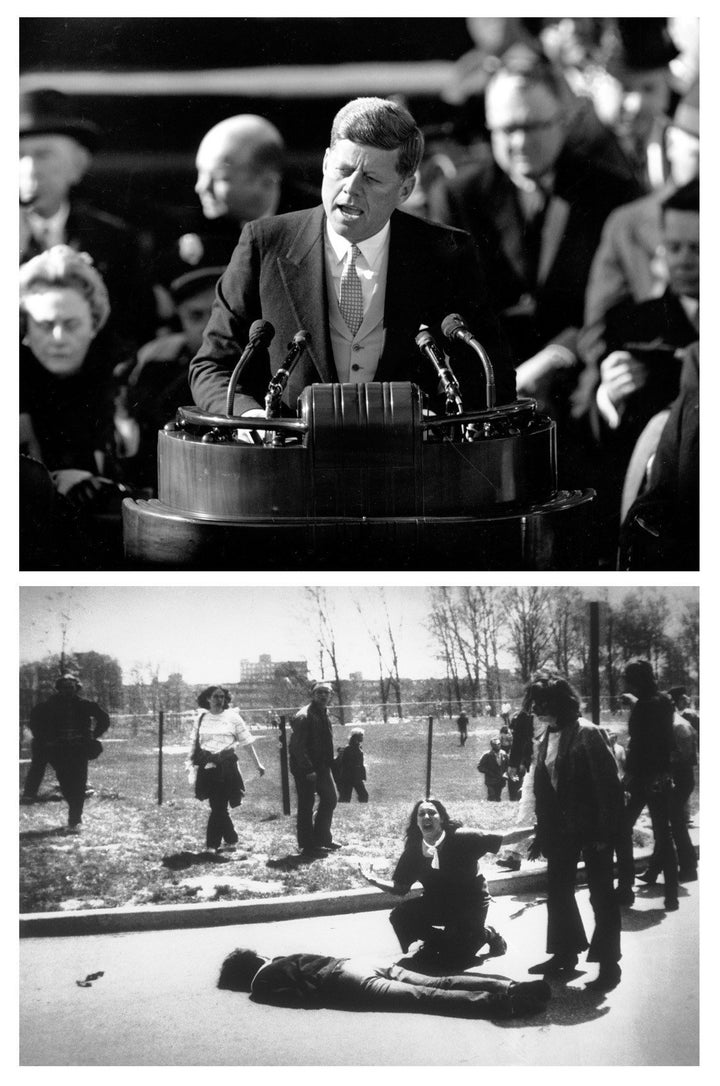
As many as three thousand people used to attend the annual memorial for the four students who were killed and the nine who were wounded by National Guardsmen during an anti-war protest at Kent State University in 1970. There will be many fewer this year. Because classes are ending and most students will have left the Ohio campus before the candlelight vigil and the memorial commemoration, it looks as if the killings at Kent State are moving inexorably from tragedy into history.
Not quite.
Kent State is America's Tiananmen Square. The photo of a young girl kneeling over the body of a dead student is etched on our collective retinas. But all these years later, it is still hard to comprehend how National Guardsmen facing no real danger from student protestors several hundred feet distant would suddenly turn, raise their rifles, and fire, in just 13 seconds, 67 bullets into the crowd.
Inevitably, National Guard leaders insisted that the Guardsmen had not been ordered to fire; either they shot in self-defense or, at worst, acted on their own. Three hundred FBI investigators found no proof of a plan to shoot students; the Department of Justice closed the case three times in as many years. It took until 1979 for a civil suit to be resolved, with the state of Ohio issuing a mild statement of regret and paying $675,000 to the victims and their families.
And yet there is no resolution of this tragedy. Just before the May 4th demonstration began, a Kent State communications major who lived in a dorm overlooking the Commons decided to record it. Setting the microphone of his tape deck in his window, he created the only real-time account of the shooting. The original was destroyed by the Department of Justice in 1979, but a copy of the tape surfaced in a collection of evidence given to the Yale University Library. In 2010, at the request of two Ohio newspapers, forensic experts used technology not available in the 1970s to evaluate a digital CD of the tape. They heard someone shout "prepare to fire" and then give an order. Two seconds later, the gunshots begin. (Alan Canfora, who was wounded that day and is now director of the Kent May 4 Center, presented the Department of Justice with the CD and asked the government to re-open the investigation. Last week the DOJ declined, declaring the enhanced recording "inconclusive.")
In 1970, nothing was inconclusive. The reaction among the young was immediate: a nationwide strike involving 850 campuses and 4 million students, and a powerful song by Crosby, Stills, Nash & Young that condemned President Nixon and the National Guard. Among their elders, the reaction was largely the opposite. A Gallup Poll taken shortly after the shootings at Kent State revealed that 58% of the respondents believed the responsibility for the deaths lay with the demonstrators; only 11% blamed the National Guard. As the author of a book about the shootings would later write, "These were the most popular murders ever committed in the United States."
Tragedies like Kent State do not occur in a vacuum. Three weeks before the shootings, Ronald Reagan, then Governor of California, said of student protest, "If it takes a bloodbath, let's get it over with." James Rhodes, Governor of Ohio, was facing an uphill battle in a Senatorial primary to be held on May 5; on May 3, he rushed to Kent, met with law enforcement and National Guard leaders, and, pounding the table at a press conference, said that student protestors were "worse than the brown shirts" and the best way to deal with them was not "to treat the symptoms" but "to eradicate the problem." That morning the National Guard general in charge announced, "These students are going to have to find out what law-and-order is all about." It does not seem possible that the Guardsmen were ignorant of such rhetoric.
Could there be another Kent State? On a college campus in 2012, it's not likely; the greatest agitation that today's students seem to share is the difficulty of finding a job. But there's a more significant reason a second Kent State would be unlikely -- protest has moved online.
"The whole world is watching." In 1968, that was the chant in the streets during the Democrats' convention in Chicago. Back then, the only place to watch the violence was on network television. Now technology turns every citizen into a network; protestors can create petitions that gather millions of signatures on Change.org or, on their smartphones, record videos and immediately post them on YouTube.
The video of University of California Davis Police Lt. John Pike dousing seated, unresisting protestors with pepper spray has been viewed 2,500,000 times on YouTube; no one who watched it needed to wait four months for the official report to know that police and university officials were at fault. So smart senior police officers around the country should be routinely reminding their rank and file that they lose credibility and expose their city to lawsuits if they wade into a crowd of video-enabled demonstrators, batons swinging and gas at the ready.
Thanks to technology, we no longer need to wait 40 years to find out how confrontations with the forces of law and order start. When demonstrators turn violent, we'll know it right away. And it's almost possible to hope that "self-defense" -- the default explanation for official misconduct -- may become as extinct as bell bottoms.
VIDEO
Neil Young wrote 'Ohio' and sang it with Crosby, Stills and Nash, but this little-seen solo performance is, for me, stronger than the original. He bobs and weaves around the stage, almost unaware of the audience; this is like an incantation, a summoning by a shaman.
BOOK
There are several books on the killings. I was particularly impressed by Four Dead in Ohio.
